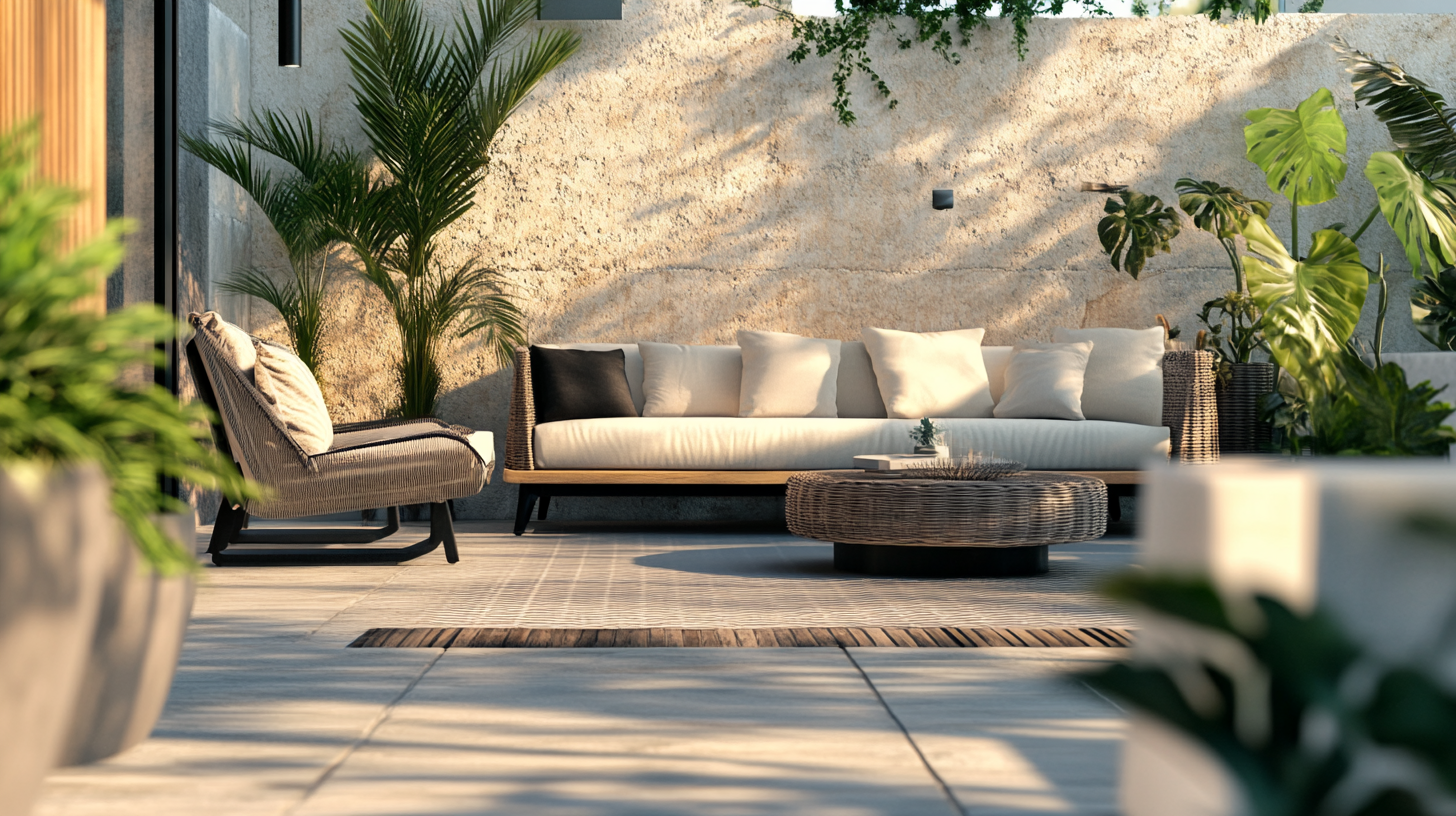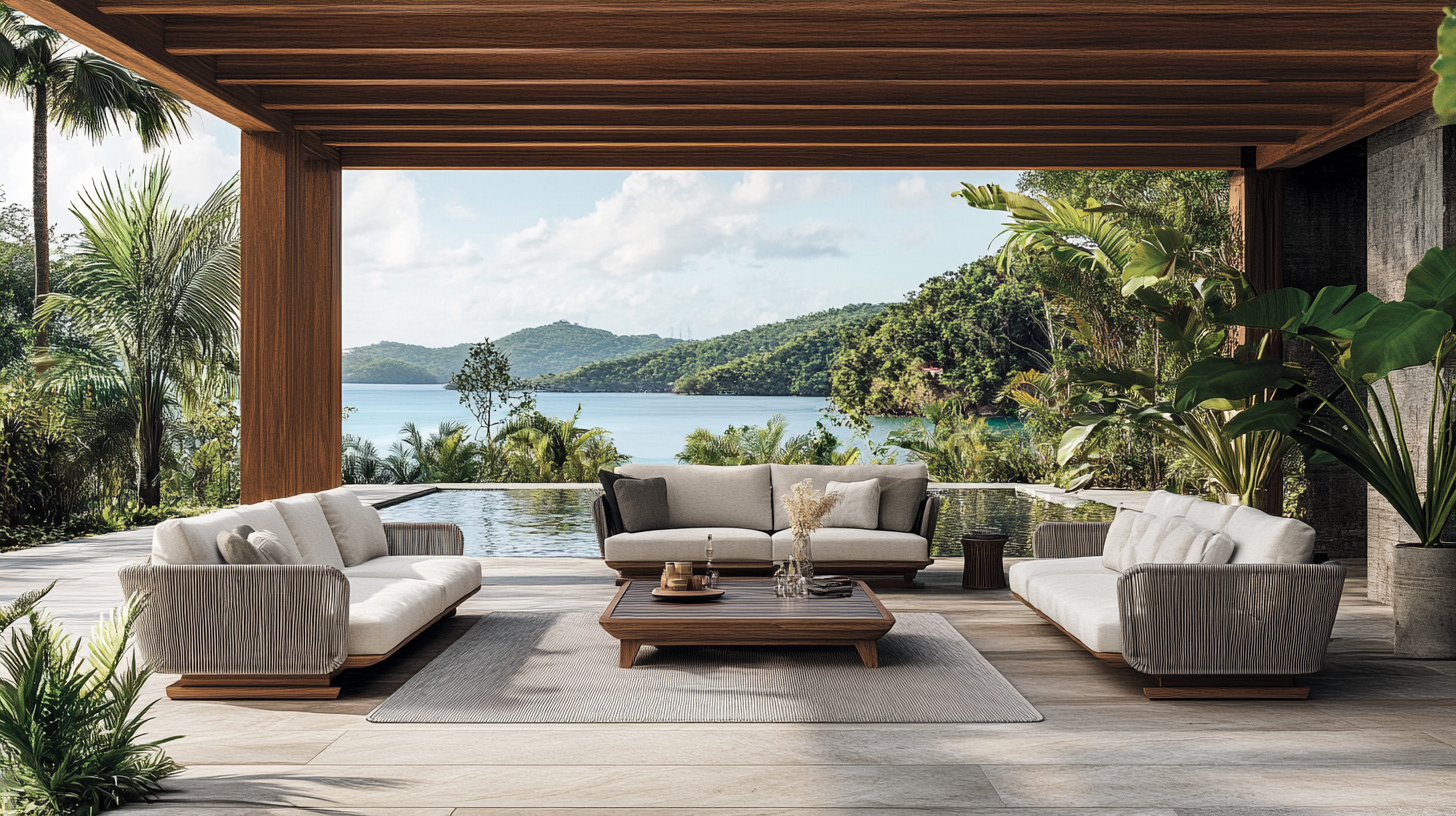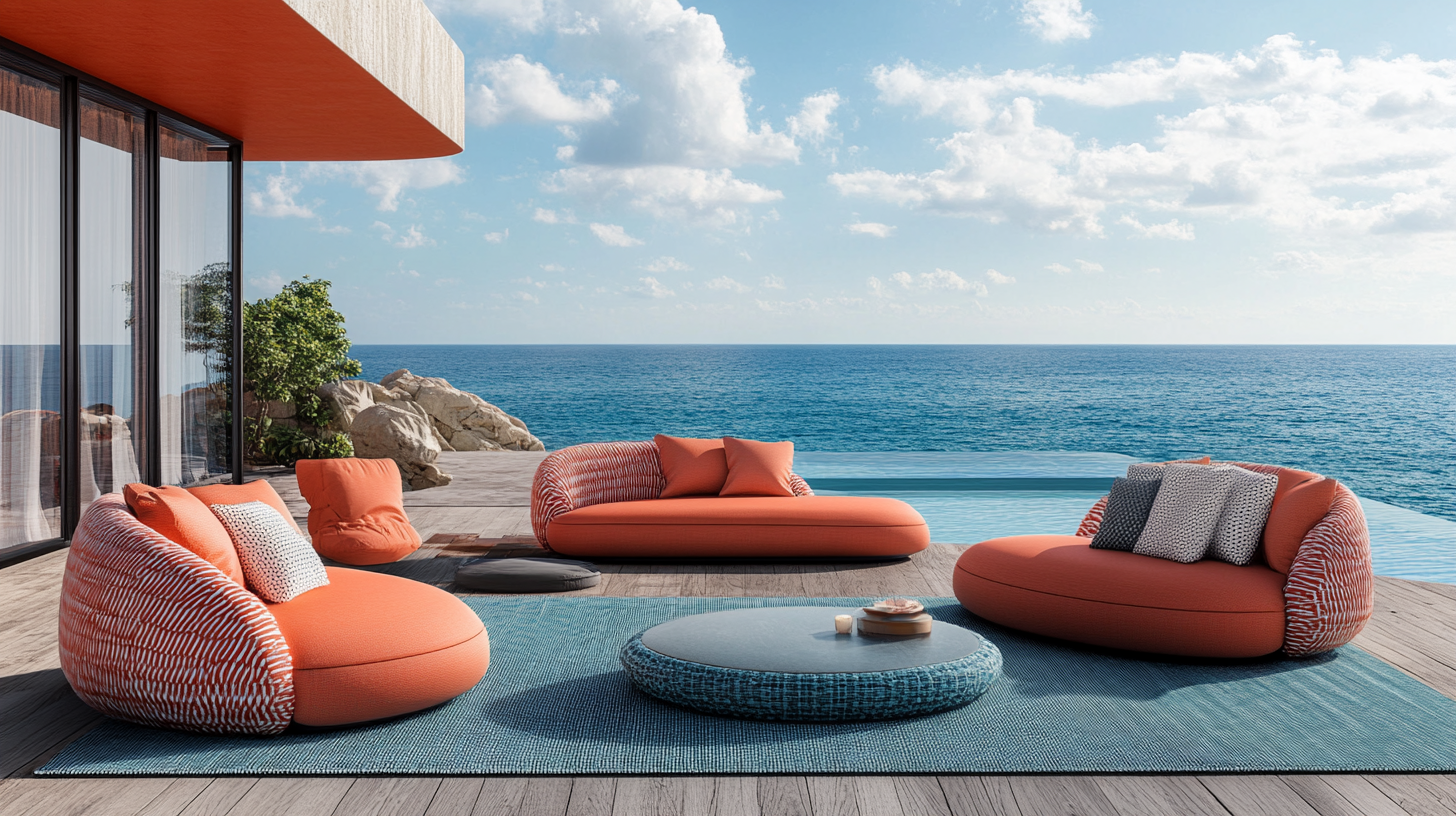Unlocking the Future of Outdoor Furniture Trends and Tips for Global Buyers in 2025
 As the outdoor furniture market continues to evolve, industry standards and trends play a crucial role in shaping consumer preferences and purchasing decisions. According to a recent survey by Research and Markets, the global outdoor furniture market is projected to reach $25 billion by 2025, reflecting an annual growth rate of 6.2%. This surge is driven by increasing consumer interest in home aesthetics and outdoor living spaces, amplified by the recent shift towards remote lifestyles. Moreover, the rising importance of sustainability and eco-friendly materials in design is influencing manufacturers to adapt their production standards accordingly. As global buyers prepare to navigate this exciting market, understanding the upcoming trends and industry standards for outdoor furniture will be essential in making informed choices that meet both aesthetic and functional demands.
As the outdoor furniture market continues to evolve, industry standards and trends play a crucial role in shaping consumer preferences and purchasing decisions. According to a recent survey by Research and Markets, the global outdoor furniture market is projected to reach $25 billion by 2025, reflecting an annual growth rate of 6.2%. This surge is driven by increasing consumer interest in home aesthetics and outdoor living spaces, amplified by the recent shift towards remote lifestyles. Moreover, the rising importance of sustainability and eco-friendly materials in design is influencing manufacturers to adapt their production standards accordingly. As global buyers prepare to navigate this exciting market, understanding the upcoming trends and industry standards for outdoor furniture will be essential in making informed choices that meet both aesthetic and functional demands.
Exploring Sustainable Materials for Outdoor Furniture in 2025
As we look ahead to 2025, the emphasis on sustainability in outdoor furniture manufacturing is set to redefine the market. With an increasing awareness of environmental issues, buyers are seeking products made from eco-friendly materials that not only look good but also contribute positively to the planet. Companies are now exploring innovative options such as recycled plastics, reclaimed wood, and sustainable bamboo, which offer durability and aesthetic appeal while minimizing ecological footprints.
In addition to traditional materials, biocomposite options are gaining traction. These materials blend natural fibers with recycled polymers, resulting in lightweight, weather-resistant furniture that maintains its integrity over time. Buyers can expect to see a rise in brands committed to transparency about their sourcing and production processes, aligning with consumer demands for ethical manufacturing. By choosing sustainable outdoor furniture, buyers not only enhance their living spaces but also champion a movement towards a greener, more responsible future in design.
Unlocking the Future of Outdoor Furniture Trends and Tips for Global Buyers in 2025 - Exploring Sustainable Materials for Outdoor Furniture in 2025
| Material |
Sustainability Rating |
Durability (Years) |
Cost per Item (USD) |
Buyer Preference (%) |
| Recycled Plastic |
High |
10 |
150 |
35% |
| Bamboo |
Medium |
7 |
120 |
25% |
| Teak Wood |
High |
50 |
300 |
20% |
| Aluminum |
Medium |
15 |
250 |
15% |
| Reclaimed Wood |
High |
30 |
200 |
30% |
Innovative Design Trends Shaping Outdoor Spaces for the Modern Buyer
 The outdoor furniture market is poised for remarkable growth, with projections indicating a rise from $16.9 billion in 2025 to $25.3 billion by 2034, at a compound annual growth rate (CAGR) of 4.6%. This growth is driven by innovative design trends that cater to modern buyers. As consumers seek to enhance their outdoor spaces, trends such as sustainable materials, multifunctional designs, and integration with technology are becoming increasingly prominent.
The outdoor furniture market is poised for remarkable growth, with projections indicating a rise from $16.9 billion in 2025 to $25.3 billion by 2034, at a compound annual growth rate (CAGR) of 4.6%. This growth is driven by innovative design trends that cater to modern buyers. As consumers seek to enhance their outdoor spaces, trends such as sustainable materials, multifunctional designs, and integration with technology are becoming increasingly prominent.
For global buyers looking to navigate this dynamic market, here are a few tips: First, consider investing in eco-friendly furniture made from recycled or sustainable materials, which not only appeals to environmentally conscious consumers but can also be a unique selling point. Second, prioritize durability and low maintenance when selecting materials, as outdoor furniture must withstand various weather conditions. Lastly, incorporate smart technology in outdoor living spaces, such as lighting or temperature control, to elevate the user experience and add value.
As the travel industry rebounds post-pandemic, key regions, particularly in the Asia-Pacific, are expected to lead the surge in outdoor furniture demand. Maintaining a pulse on evolving consumer preferences will be essential for suppliers and retailers alike to successfully engage with the modern buyer in this flourishing landscape.
Choosing the Right Outdoor Furniture for Different Climates and Environments
When selecting outdoor furniture, understanding the impact of climate and environment is essential for making the right choices. For instance, in humid regions, materials such as aluminum and resin wicker are ideal due to their resistance to rust and mold. These materials can easily withstand the heavy rain and high humidity typical of such climates, ensuring longevity and minimal maintenance. On the other hand, traditional wood furniture, while aesthetically pleasing, may require regular sealing and protection to prevent water damage.
In contrast, arid and sunny environments call for UV-resistant materials to combat sun exposure. Teak and eucalyptus are excellent choices for their natural oils that resist weathering in dry conditions, making them durable against the elements. Furthermore, adding cushions made from fade-resistant fabrics enhances comfort without sacrificing resilience.
For coastal areas, furniture made with treated metal and slatted designs can facilitate drainage and are less prone to corrosion from salty air. By considering these factors, global buyers can effectively tailor their outdoor spaces for longevity and style, catering to their unique environmental conditions.
Top Outdoor Furniture Brands to Watch in 2025: A Global Perspective
As we delve into 2025, the outdoor furniture landscape is set for a remarkable transformation, driven by innovation and sustainability. Leading brands like Dedon and Knoll are pushing the envelope with eco-friendly materials and versatile designs. Dedon's iconic woven creations not only embody aesthetics but also ensure durability against environmental wear. Meanwhile, Knoll’s commitment to sustainable manufacturing processes makes it a brand of choice for environmentally-conscious consumers. These brands will be at the forefront of outdoor design trends that prioritize not just style, but also functionality and sustainability.
Additionally, international brands like Gloster and Trex are making waves with their bold approach to outdoor living. Gloster, known for its luxury outdoor furniture, combines traditional craftsmanship with modern technology, offering pieces that are both stylish and enduring. On the other hand, Trex leads the way in composite materials, providing stylish, low-maintenance options for outdoor spaces. As global buyers seek unique ways to enhance their outdoor experiences, these pioneering brands reflect the future of outdoor furniture, characterized by a blend of luxury, sustainability, and clever design.
Future Trends in Outdoor Furniture: Key Insights for 2025
Maintenance Tips to Extend the Life of Your Outdoor Furniture Investment
Maintaining outdoor furniture is essential for maximizing your investment and ensuring longevity. According to a report by Grand View Research, the global outdoor furniture market is expected to grow significantly, reaching over $30 billion by 2025. This surge in demand underscores the importance of proper maintenance, which can extend the life of your outdoor pieces by years.
One effective tip is to regularly clean your outdoor furniture using a mild soap solution. This simple step helps prevent dirt and grime buildup that can lead to deterioration. Additionally, applying protectants like UV blockers and water repellents can shield your furniture from harsh weather conditions. Research from the Furniture Industry Association indicates that items treated with protective coatings last up to 30% longer than untreated ones.
Lastly, consider the storage of your outdoor furniture during extreme weather conditions. A survey by the American Society of Landscape Architects indicates that homeowners who properly store their outdoor furniture in winter see a 50% reduction in damage compared to those who leave their pieces exposed. Simple actions like covering or moving furniture indoors can greatly enhance durability, ensuring your investment remains pristine for years to come.


Home
About Us
Products
Engineering Case
Buyer Service
News
Blog
Contact Us


 As the outdoor furniture market continues to evolve, industry standards and trends play a crucial role in shaping consumer preferences and purchasing decisions. According to a recent survey by Research and Markets, the global outdoor furniture market is projected to reach
As the outdoor furniture market continues to evolve, industry standards and trends play a crucial role in shaping consumer preferences and purchasing decisions. According to a recent survey by Research and Markets, the global outdoor furniture market is projected to reach  The outdoor furniture market is poised for remarkable growth, with projections indicating a rise from
The outdoor furniture market is poised for remarkable growth, with projections indicating a rise from 